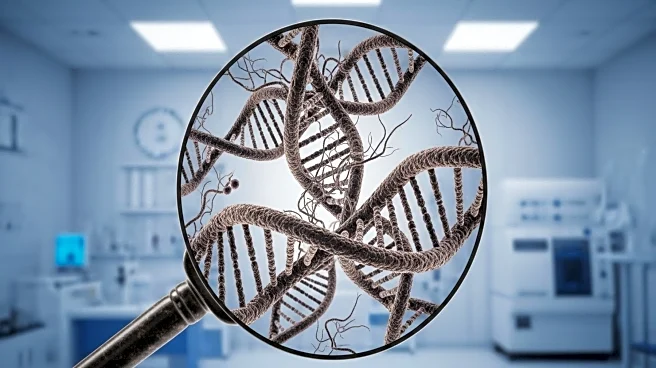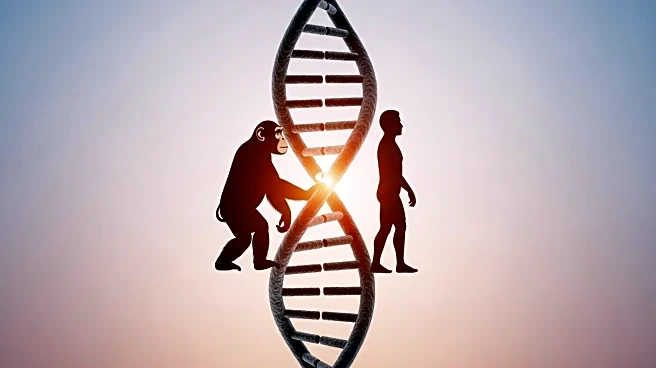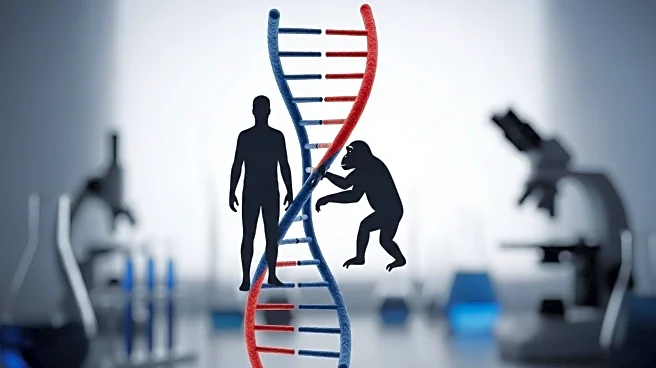What's Happening?
Recent studies have revealed that noncoding parts of DNA, previously considered useless, play crucial roles in gene regulation. Researchers have mapped DNA switches, such as enhancers, silencers, and insulators, which control gene activity in human and mouse cells. These elements form complex networks around genes, providing redundancy and security against errors. Experiments using CRISPR tools demonstrated the importance of these switches, showing varied effects on gene activity depending on their location and interaction with transcription factors. Additionally, researchers at the Centre for Palaeogenetics in Stockholm have recovered microbial DNA from mammoth remains, including a 1.1-million-year-old tooth, revealing ancient bacteria that lived with these extinct creatures.
Why It's Important?
Understanding the regulatory elements of DNA has significant implications for medicine and evolutionary biology. These findings could lead to personalized treatments by predicting gene expression and disease risk based on an individual's genome. The research also highlights the role of regulatory DNA in species evolution, explaining differences between humans and chimpanzees despite similar protein-coding genes. The discovery of ancient microbial DNA offers insights into past ecosystems and the relationships between extinct species and their microbiomes, potentially informing conservation efforts and understanding modern pathogens.
What's Next?
Future research may focus on further mapping regulatory DNA to enhance personalized medicine and early disease detection. The mammoth findings open avenues for studying ancient ecosystems and microbial evolution, which could improve conservation strategies and understanding of species extinction. Scientists aim to refine machine learning models to predict gene expression more accurately, potentially revolutionizing medical diagnostics and treatment plans.
Beyond the Headlines
The studies underscore the complexity of DNA as a layered code influenced by regulatory elements and microbial interactions. This deeper understanding could transform approaches to health and disease, emphasizing the importance of noncoding DNA in biological processes and evolutionary history.











